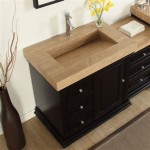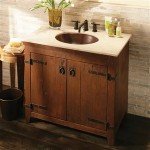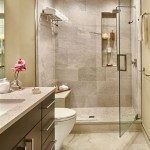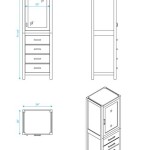Can You Use Drywall in a Bathroom?
Bathrooms present unique challenges for construction materials due to the constant presence of moisture. This raises the question: can you use drywall, a common building material, in a bathroom? The answer is not a simple yes or no. While drywall can be incorporated in a bathroom, it requires specific considerations and careful implementation to ensure longevity and prevent damage.
Moisture Resistance and Drywall Types
Standard drywall, often called "greenboard," is not designed for wet environments. It absorbs moisture readily, leading to warping, mold growth, and structural compromise. However, specialized drywall types are engineered for bathrooms and other humid areas. These include:
- Moisture-resistant drywall (MR drywall or greenboard): This type features a water-resistant paper facing and a core resistant to moisture absorption. It is designed to withstand higher humidity levels than standard drywall. However, it is not completely waterproof and should not be used in direct contact with water.
- Water-resistant drywall (WR drywall or blueboard): This variety boasts a green paper facing and a core specifically formulated to resist water absorption. It is often used in areas subject to direct water contact, such as shower stalls.
- Cement board: This robust material, often called "Hardibacker," is composed of Portland cement, fiberglass, and sand. It is highly resistant to moisture and can be used in direct contact with water. However, it is heavier than standard drywall and requires specialized fasteners and installation techniques.
Selecting the appropriate drywall type for your bathroom is crucial for its longevity and structural integrity. MR drywall is generally suitable for most bathroom areas, while WR drywall or cement board may be necessary for specific areas like the shower or tub surround.
Installation and Waterproofing Techniques
Proper installation and waterproofing are essential when using drywall in a bathroom. Even with moisture-resistant options, water can seep into the seams and behind the drywall, causing damage over time. Therefore, careful attention to these aspects is crucial:
- Seam taping and sealing: All seams and joints must be properly taped and sealed with water-resistant joint compound and tape. This creates a barrier against moisture penetration. Use a high-quality sealant designed for bathroom applications.
- Waterproofing membrane: A waterproof membrane, often called "shower pan liner," should be installed behind the drywall in areas directly exposed to water, such as behind the shower or tub. These membranes create a barrier against water intrusion and prevent damage to the drywall core.
- Ventilation: Adequate ventilation is critical to prevent moisture buildup, especially in enclosed spaces like showers. Install exhaust fans that can effectively remove moisture from the air and keep the bathroom dry.
By implementing these methods, you can create a moisture-resistant barrier that protects the drywall and prevents potential issues. Regular maintenance and inspections can also help identify and address any signs of water damage early on.
Considerations and Alternatives
While drywall can be incorporated into a bathroom, it is important to consider its limitations and explore alternative options suited for the specific needs of your project:
- Cost and labor: Specialized drywall types and waterproofing measures can increase the overall cost of construction compared to using standard drywall in other areas of the house. Consider this factor when budgeting for your bathroom renovation.
- Durability and longevity: Although moisture-resistant drywall offers improved protection against water damage, it is still susceptible to issues over time. Cement board is generally considered more durable and resistant to moisture, although its installation might require specialized expertise.
- Aesthetic considerations: Cement board and other alternatives have different surface finishes and textures compared to drywall. Carefully consider the desired aesthetic and how different materials might affect the overall design of your bathroom.
Choosing the best material for your bathroom requires weighing factors such as budget, desired lifespan, and specific requirements. Consulting with a professional contractor or architect can provide tailored recommendations for your project.

Best Drywall For Bathroom 5 Options To Choose From

What Type Of Bathroom Drywall Should I Use

What Kind Of Drywall Do You Use In A Bathroom

Your Guide To Drywall For Bathroom Use Kitchen Infinity

What Type Of Drywall Should Be Used In A Bathroom
What Type Of Drywall Is Used In Bathrooms Quora

Green Board Vs Blue Bathroom Remodel Shower Bathrooms

Moisture And Mold Resistant Drywall Fine Homebuilding
Drywall And Cement Board For The Downstairs Bathroom Blog Homeandawaywithlisa

How To Finish Drywall Where It Meets The Shower Wallboard Trim Tool
Related Posts







